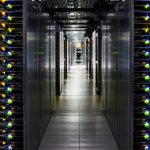Cisco announced additional solutions and services to its Connected Grid portfolio that will help utilities modernize the electric grid with built-in flexibility, security and interoperability enabled by the power of the network. Cisco’s new technology architecture, solutions and related services address key utility concerns around cost, reliability and scalability in their communications infrastructures.
As the electric grid becomes more intelligent and complex, utilities around the world want technology that can grow to address multiple operational needs over time, supports their unique market and organizational structures, and is designed so that different vendor systems can work together. They also need solutions that provide a high degree of security and allow them to utilize their existing installed base of technology as they modernize their electric grids.
Given these requirements, Cisco offers utilities and partners a comprehensive blueprint for smart grid deployments known as theCisco GridBlocksTM Architecture. This provides a forward-looking view of integrating digital communications and the electrical grid, as well as specific deployment guidance for the various grid communications networks that exist today. It also provides a framework for utilities to design and deploy comprehensive management and security solutions across the entire grid.
The new Cisco offerings – which include a field area network (FAN) solution, as well as expanded transmission and substation products – are based on this architectural model and are designed to address key utility concerns around cost, reliability and scalability in their communications infrastructures. By delivering multiple applications over a single, intelligent and highly secure platform, electric utilities will benefit from lower total cost of ownership as well as derive value from new services and functional integration of networks.
The new Cisco Connected Grid services and integrated solutions help electric utilities in the planning, design and optimization phases of their grid modernization initiatives.
Cisco GridBlocks Architecture
- Cisco’s GridBlocks Architecture provides utility operators with a communications view of the entire power delivery chain with security woven throughout the design.
- The modular approach allows utilities to focus on particular elements of their network at any given time and is adaptable to differing market structures and regions.
- The Cisco GridBlocks Architecture provides a framework in which communications requirements can be specified at each level.
- It allows customers to take a holistic view of how to evolve their electric grid and design phases of technology implementation.
Field Area Network Solution
- Cisco’s Connected Grid FAN solution simplifies utility operations by enablingapplications such as advanced meter infrastructure, distribution automation, and protection and control to be delivered over a common network platform. The solution has a layered architecture that supports both wired and wireless communications.
- Cisco and Itron deliver on their strategic alliance announced in 2010 by providing a complete FAN solution that integrates Itron’s smart grid solution onto the Cisco IPv6-based network. This provides a validated, interoperable solution for utilities that allows affordable and accessible upgrades as time goes by.
- As part of the new FAN solution, Cisco is introducing the 1000 series Connected Grid Router. The router comes in models for outdoor pole-top mount (CGR 1240) and indoor din-rail mount (CGR 1120). Each supports 2G/3G, WiMax and RF mesh connectivity.
- These ruggedized routers are specifically built to comply with electrical substation standards and designed for outdoor environments. The router has no moving parts (e.g., fans) and is built with industrial-grade components to support an extended temperature range.
- The FAN solution also includes new endpoints, device management and network management systems that are open and flexible across diverse energy markets, providing a modular solution that can be reassembled as market structures change.
- The Cisco Connected Grid Network Management System (NMS) provides network operators with end-to-end monitoring and control of the network communications, delivering enterprise-class visibility that can currently scale to manage up to 10 million endpoints.
Transmission and Substation Solutions
- Cisco is expanding its transmission and substation solution to help utilities extend the useful life of their installed base of technology as part of a phased migration to standards-based networks. With this launch, Cisco offers a full set of communication modules for its 2000 Series Connected Grid Routers. These include the smart grid industry’s first wireless 4G/LTE module, WAN modules to support ISDN, and DSL networks.
- Cisco has also enhanced security capabilities on the 2000 Series Connected Grid Routers and Switches. This includes the most advanced portfolio of VPN, encryption, access control, and threat detection in the industry. Features include intrusion prevention system (IPS) / intrusion detection system (IDS) and support for SCADA signatures.In addition, the Cisco 2000 Series Connected Grid Routers support synchrophasor deployments with source-specific multicast for efficient transfer and sharing of phasor management unit data across utility boundaries.
Connected Grid Services
- Cisco has developed a set of tools and professional services to help utilities prioritize their communication investments by performing portfolio-level analysis of solutions on a shared multilayer infrastructure. This helps deliver an optimal design for technology deployment based on proven use cases and business requirements.
- Cisco has developed the Connected Grid Visualization and Design tool to address the complexity of automating substation communications. The tool allows engineers to visualize in a single interface the energy delivery network CIM diagrams, IEC 61850 protection schema for intelligent electronic devices (IEDs), and the communications network. This helps enable engineers to design, model, and simulate all three networks dynamically, reducing design and deployment time and enabling engineers to standardize designs across hundreds or thousands of substations.







